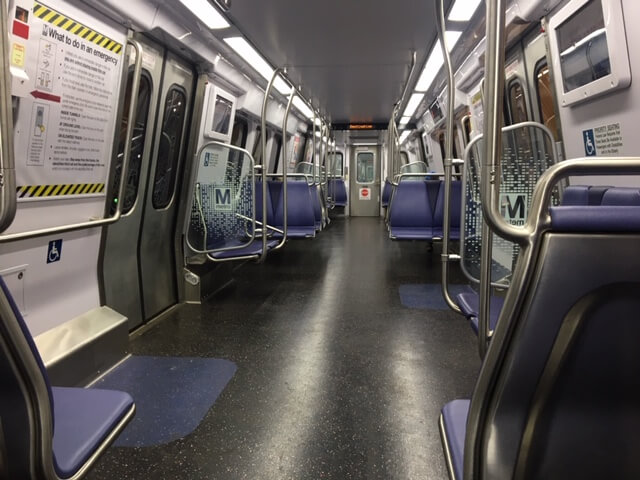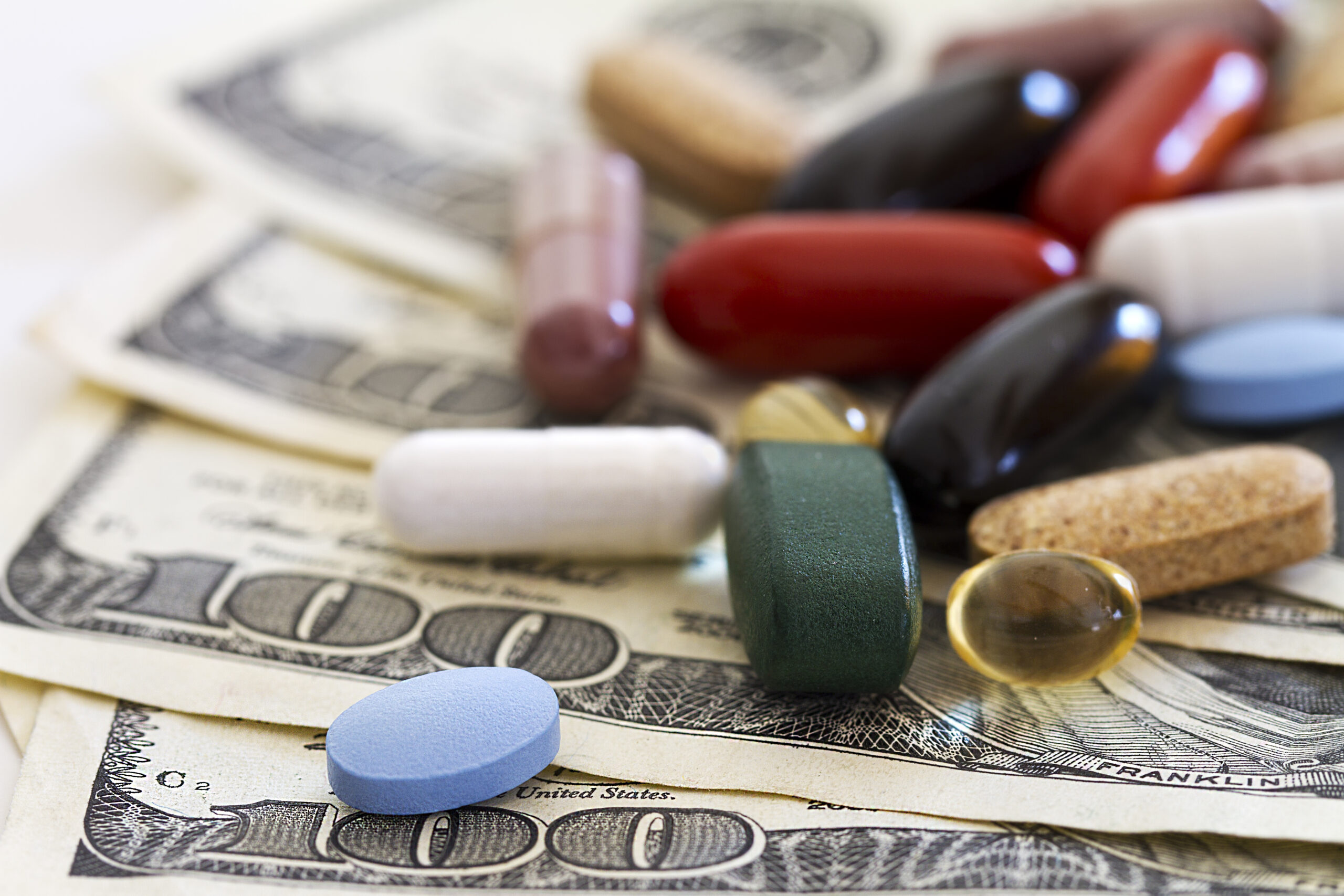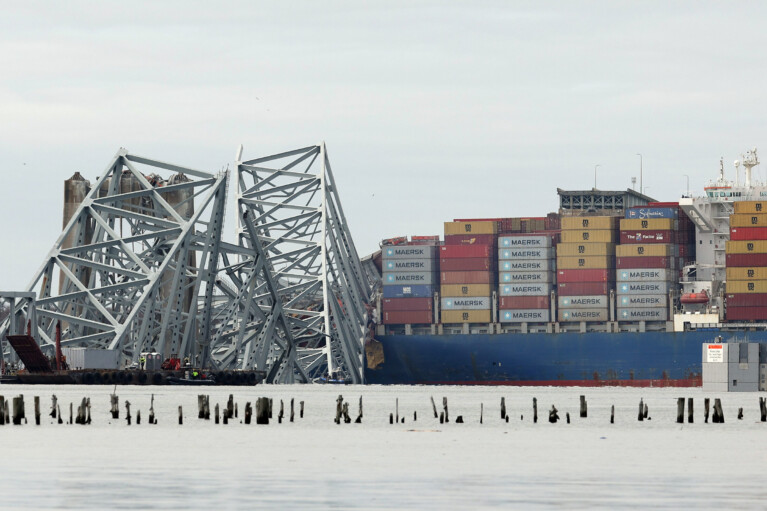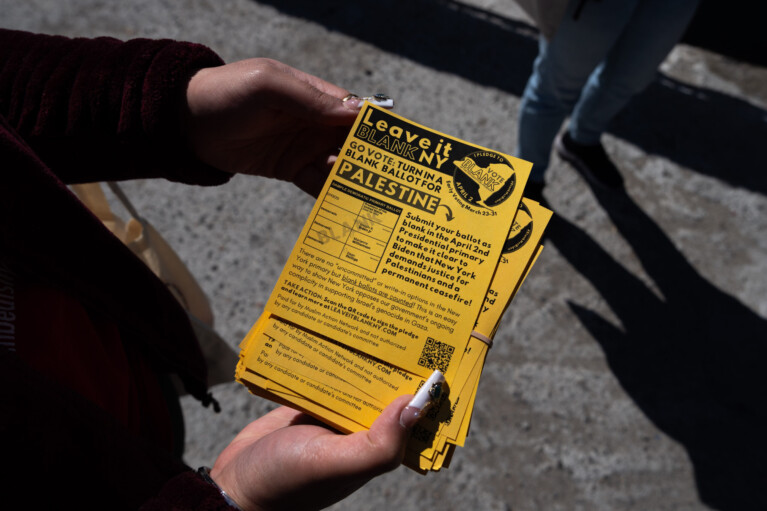Federal Stimulus Throws Metro System a Lifeline. But Will Riders Return?

Metro is finally catching a break, and it’s a plus for workers in the Maryland and Virginia suburbs poised to start heading back to the office once they’re vaccinated.
The $1.9 trillion coronavirus relief package signed by President Biden last week ends—for now—the prospect that the bus and subway operator in the Washington, D.C., area would have to resort to deep service cuts to stay solvent.
Metro, hammered when commuters abandoned the system beginning a year ago to work from home, had proposed the shutdown of more than 20 of its train stations across the region’s far-flung system, ranging from College Park-University of Maryland to Smithsonian to Arlington Cemetery to Clarendon.
That wasn’t all. Bus service would have been cut in half and the subway system would close at 9 p.m., a death knell for District, Maryland and Virginia restaurants and entertainment venues already slammed by the economic downturn.
Biden’s American Rescue Plan includes $1.4 billion in transit funding for the capital region, and most of that is expected to go to the Metro system.
“This bill is a huge deal for transit,” said Ben Fried, a spokesperson for TransitCenter, an advocacy group that promotes transit use. “Basically every agency of any substantial size was facing some degree of cuts before the end of this year. This bill buys agencies at least two years. It will cover them through 2022 and into 2023.”
While the influx of federal money solves many of Metro’s immediate financial problems, though, the pandemic’s effects could linger for years. It could take years before ridership returns to its previous levels, especially if Maryland and Virginia commuters are allowed to work from home more and go into the office less once the economy recovers.
But the fresh funds give the system’s leaders time to understand new commuting patterns and adjustments. “The $1.4 billion provided by the American [Rescue] Plan for our region’s transit agencies will allow us to avert the painful service reductions and layoffs that were on the table,” said Paul C. Smedberg, a Virginia appointee and chair of the Metro board of directors, in a statement last week.
The agency’s board has not finalized its work on the budget for the next fiscal year, which begins in June.
Vanishing commuters
Almost all U.S. transit systems saw a huge drop in ridership beginning a year ago, when people started staying at home to prevent the spread of COVID-19.
For the Washington Metropolitan Area Transit Authority, known as WMATA, an astonishing 90% of its riders and its revenue disappeared.
The riders that remained were more likely to take a bus than a train, and, for safety reasons, buses stopped collecting fares.
Congress had stepped in to help transit agencies twice before during the pandemic. Congress included money for safety measures and to replace lost revenue in the CARES Act that it passed last March.
But transit agencies, including WMATA, planned for deep cuts as that money started to run out late last year. Congress stepped in again in December, and included money for transit agencies in its lame duck relief bill. WMATA received $714 million as a result.
But the December bill was largely seen as a stopgap measure until Biden came into office, because the incoming president had promised to make COVID-19 relief a central piece of his agenda.
Biden’s emergency package will likely have a longer-lasting impact, Fried said.
“That totally changes the depths of the fiscal crisis that they’re facing,” he said. “When this money expires, they probably won’t be out of the woods, but they will be in a much better position than they are in today.”
Maryland, Virginia lawmakers involved
The congressional delegations from Maryland and Virginia pressed for the transit relief and praised its inclusion in the final package.
U.S. Sen. Chris Van Hollen (D-Md.) said the funding was needed to protect the local economy.
“From helping our essential workers arrive on the pandemic’s front lines to getting our local workforce where they need to go as we safely reopen, WMATA provides a vital service to our region and our residents,” he said in an emailed statement. “The American Rescue Plan includes substantial relief to WMATA to both protect service today and to keep us on track for a future beyond COVID-19.”
Van Hollen and Maryland Sen. Benjamin L. Cardin, also a Democrat, said in a statement announcing Maryland funding that the transit money will “allow our frontline workers to travel to and from work and to ensure our transit systems are able to weather this storm to serve commuters.”
In addition to WMATA funding, the state is getting $353.6 million for the Maryland Transit Administration and other Baltimore-area transit systems under the new federal stimulus package and approximately $10 million for other transit systems around the state.
Now that the short-term transit fix has been enacted, the area’s congressional delegation is also trying to secure a long-term commitment from the federal government to solidify WMATA’s financial health.
Nearly a third of WMATA’s rail riders (including 37% of riders from Virginia) were federal employees as of 2016, and half of its stations serve federal facilities.
So the federal government subsidizes the transit agency, along with Maryland, Virginia and Washington, D.C.
Congress agreed to pay $150 million every year to support WMATA back in 2008. But that commitment officially ended after a decade, and Congress has not formally reauthorized it. (It has, however, continued to make those payments on a year-to-year basis.)
Now, the area’s senators want to extend that $150 million annual commitment through 2030. They also want WMATA to be able to get another $50 million a year if it implements a number of changes that the senators want, including giving more power to its inspector general, establishing task forces on rail and bus safety, and keeping better tabs on its physical assets.
Metro’s leadership supports the measure.
Will people still work from home?
One open question that could affect Metro’s financial viability going forward is how or whether commuting patterns will change once the threat of the virus dissipates.
Even before the pandemic hit, Metro’s rail ridership was lower, especially on Mondays and Fridays, as more people started telecommuting or using alternate work schedules.
With federal employees and other commuters largely staying at home, that trend has been exacerbated during the COVID-19 outbreak.
Now, though, some federal employees, including the National Treasury Employees Union, are pushing to expand the use of work-at-home arrangements once the crisis is over.
“We have seen firsthand how successful telework programs have been over the past year, with many agencies showing an increase in productivity by working from home. This is in line with [the Office of Personnel Management’s] findings in a 2018 work-life survey which found that employees that telework are more likely to exceed performance standards,” NTEU President Tony Reardon told the House Oversight and Reform Subcommittee on Government Operations last month.
“Telework has been a win for everyone — not just for employees, but for management who can recruit better workers without losing productivity, for taxpayers who save on federal building leasing costs and can continue to rely on government services during emergencies, and for the environment, which benefits from reduced pollution from commuting,” he argued.
But it may not be a win for WMATA, which has depended on rush hour traffic as its biggest source of fare revenues.
Fried, the advocate from the TransitCenter, said the shifting traffic patterns could pose a problem for WMATA and other transit agencies.
New York’s transit agency, for example, anticipates that it won’t get back to its pre-pandemic ridership levels until 2024.
WMATA hasn’t provided a similar date, but its current budget proposal assumes that ridership will only modestly increase in the coming year. The agency was at an all-time high for ridership before the pandemic, but it now projects that only 25% of those passengers will return by next year.
“There might also be some opportunities in shifting travel patterns,” Fried said. “If there’s less peak travel in the a.m. and p.m. rush, the agency may be more inclined to run frequent service all day long. There are trips that could be captured with that kind of service that agencies aren’t capturing now.”
There’s not much that transit agencies can do to influence how employers, including the federal government, decide to handle remote work in the future, Fried said. “Agencies have to focus on what they can control,” he said.
The importance of federal employees to WMATA’s ridership may be waning, though. A study by the Metropolitan Washington Council of Governments, for example, projects that the federal government’s share of overall employment in the region will drop from 12% of the region’s workers in 2015 to 8% by 2045.
In the meantime, though, Fried said one of the most important things the federal government can do to improve transit use is to stress how safe buses and trains are, even during a pandemic.
“Even before we get the full vaccination, it’s still going to be a safe environment because there’s good air ventilation on transit vehicles” and almost everyone wears masks, he said. “It’s not the same as going to an indoor venue where the windows are closed and you’re breathing the same air as everyone else.”
Daniel C. Vock is a Washington correspondent for States Newsroom. He can be reached at [email protected].



 Creative Commons Attribution
Creative Commons Attribution